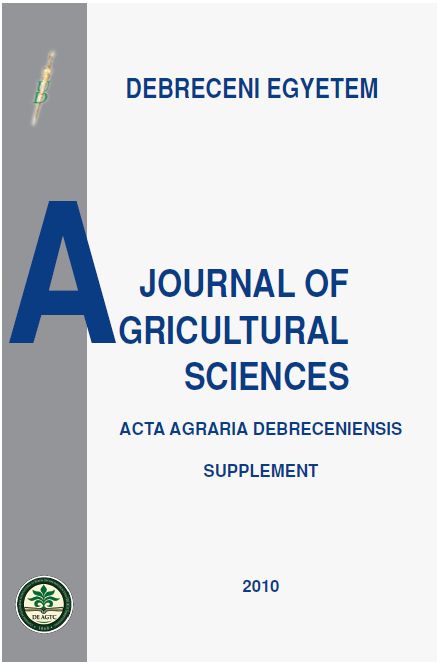The effect of crop protection and agrotechnical factors on sunflower in the Hajdúság region
Authors
View
Keywords
License

This work is licensed under a Creative Commons Attribution 4.0 International License.
How To Cite
Abstract
Extreme weather conditions are becoming more and more frequent in the crop years, thus increase the risk of sunflower production.
The objective of researches into plant production is to minimize these effects as much as possible. In this sense, the optimization of
agrotechnological factors is of high importance. Within these factors, the appropriate crop technology (sowing time, crop density)
and optimized, rational crop protection technologies are important, especially in the highly sensitive sunflower cultures. The effect of
sowing time, crop density, and fungicide treatments on the yield of sunflower hybrids was analysed in different crop years in 2008
and 2009. In each case, the infection was highest with the early sowing time and at the highest crop density level (65000 ha-1). When
one fungicide treatment was applied, the rate of infection decreased compared to the control treatment. The further decrease of the
infection rate was less after the second fungicide treatment.
In the humid year of 2008 the crop yield was the highest at 45000 ha-1 crop density level in the control treatment and at 55000 crop
ha-1 crop density level when fungicides were applied. In the draughty year of 2009 the maximum yield was gained at 55000 ha-1 crop
density level in the control treatment and at 65000 crop ha-1 when fungicides were applied. In 2008 and 2009 as regards the crop
yield, the difference between the optimal and minimal crop density levels was higher in the fungicide treatments than in the control
treatment (in 2008: control: 517 kg ha-1; one application of fungicides: 865 kg ha-1; two applications of fungicides: 842 kg ha-1), (in
2009: control: 577 kg ha-1; one application of fungicides: 761 kg ha-1; two applications of fungicides: 905 kg ha-1).
In each and every case, the first treatment with fungicides was more effective than the second. In 2008, the highest yield was
obtained with the third, late sowing time in each fungicide treatment. The differences between the crop yields with different sowing
times was less than in 2009, when the results of the second treatment exceeded those of the first and third treatment in each case.

 https://doi.org/10.34101/ACTAAGRAR/I/8372
https://doi.org/10.34101/ACTAAGRAR/I/8372